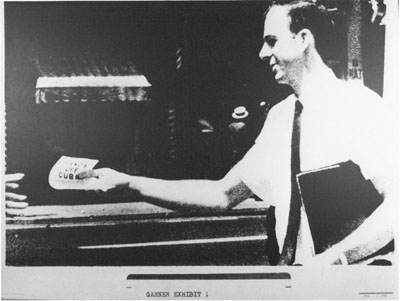
Once again this blog turns to John Newman’s Oswald and the CIA (2008 edition) for evidence from the vast depths of US government files. In this way, pre-assassination documents can throw light on Lee Harvey Oswald.
Oswald in New Orleans, April-September ’63
Oswald left Dallas not long after the Walker shooting, and went back to his hometown, New Orleans. Once there, he wrote to Vincent Lee, the national director of the left-wing Fair Play for Cuba Committee (FPCC), about setting up a New Orleans branch of the organization. But ‘Lee lost interest in Oswald when he violated the bylaws of the FPCC by claiming charter status’ for said branch (p.289). Oswald conducted the business of his rogue ‘FPCC’ under the name ‘A. J. Hidell, Chapter President’ (p.329), and on some of the literature he handed out (see photo), the address 544 Camp Street was used. This, as Newman says, ‘deepens the mystery, for this was the location where Guy Banister and the Cuban Revolutionary Council (CRC) maintained their offices’ (p.289).
Oswald’s leaflets were pro-Castro, but these people were firmly anti-Castro. The CRC was the ‘stable’ coordinating ‘core’ of Cuban exiles (p.289), but following the Cuban Missile Crisis it had gone into disfavour with the Kennedy administration, because stirring up trouble in Cuba had now become a dangerous threat to world peace. All US government funding of the CRC ceased from 1 May ’63. Guy Banister (1901-1964) was a naval intelligence, FBI and New Orleans Police Department veteran who was now running a private detective agency which undertook anti-communist activities and raised money for the New Orleans branch of the CRC. Fans of the film JFK will be disappointed to find out that the only evidence that Oswald was in any way associated with Banister or worked out of 544 Camp Street is the story told by Banister’s secretary Delphine Roberts. He used the address, but we don’t know for sure why. However, that he knew the eccentric anti-Castro activist and Banister associate David Ferrie (1918-1967) is beyond question, as they were in the same Civil Air Patrol unit before Oswald joined the Marines, and a photo has been unearthed of them together.
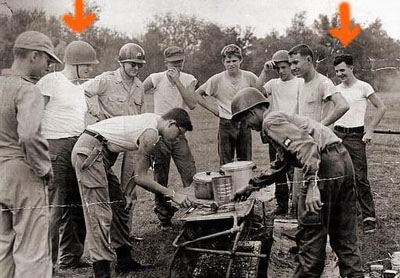
(This photo is generally available on the internet, and I can no longer find which website added the helpful arrows.)
Another intriguing fact is that after the assassination the New Orleans FBI deleted a reference to 544 Camp Street in a message to the FBI director (pp.310, 593). A touchy subject?
During this New Orleans period, Oswald was making travel plans. On 24 June he applied for a passport, and on 1 July, ‘Marina, reportedly at Oswald’s request, wrote to the Soviet Embassy asking to return to the Soviet Union’ (p.316). Oswald mentioned a plan to travel to the USSR on his passport application, but he did not mention any plan to travel to Cuba (the evidence for that is the application to the Cuban Consulate in Mexico City).
As ‘Hidell’, Oswald had been handing out pro-Castro leaflets, but in August, Oswald started using his own name to try to infiltrate the anti-Castro Cuban revolutionaries, specifically the Cuban Student Directorate, the Directorio Revolucionario Estudiantil (DRE). There was a CIA link here: the DRE retained covert CIA funding because its activity was propaganda, not military revolution. Oswald introduced himself to the New Orleans DRE delegate Carlos Bringuier (b.1934), saying that as an ex-Marine he wanted to train anti-Castro Cubans in guerrilla warfare. Bringuier declined this offer, and was then surprised, a few days later, to discover Oswald handing out pro-Castro FPCC literature on Canal Street. Something of a scuffle ensued, and Oswald, Bringuier and others were arrested.
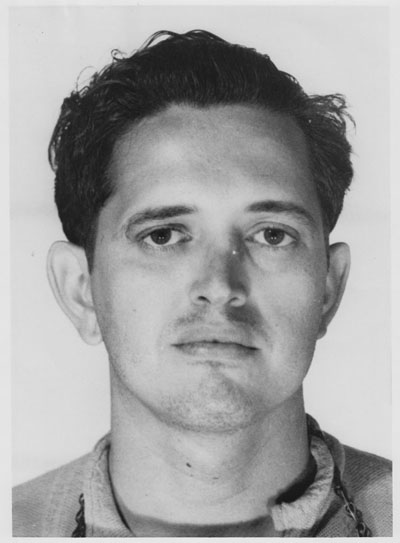
Carlos Bringuier
A strange twist to this is that in the jailhouse, Oswald asked to talk to the FBI, to ‘supply information’ to them about his FPCC activities (p.334). An FBI agent, John Quigley, who was familiar with Oswald’s defection to the USSR, was sent along. Oswald told Quigley about how he’d heard of the New Orleans chapter of the FPCC, and then decided to join it. His FPCC card (member #33) was signed by the New Orleans ‘Chapter President’, A.J. Hidell (in handwriting Marina testified to the Warren Commission was hers) and Oswald told Quigley he’d ‘never personally met Hidell’ (p.335). Oswald was trying to convince Quigley that the New Orleans FPCC were a large, secret organization.
The upshot of the Canal Street arrest was a court appearance in which Oswald paid a fine, and he got to participate in a radio debate on WDSU. But during this debate about Cuban-American relations, Oswald was exposed as a former defector to the USSR and the ‘damage was done… Oswald appeared compromised as a closet Communist and suspect tool of Moscow. His usefulness for any purpose in New Orleans, including pro-Castro leafleting, was finished’ (p.345). Indeed, Oswald wound down his activities in New Orleans at this point. Marina and June went back to Irving, and Lee obtained a tourist permit for Mexico.
The Odio Incident, September ’63
Newman has a take on the mysterious ‘Odio Incident’ which is sympathetic to Silvia Odio and paints it as more likely that Oswald, not an Oswald impostor, paid the woman a visit in Dallas in late September. This incident did not sit well with the Warren Commission’s timeline, and certainly the meeting could not have taken place too close to 10am, 27 September, the hour Oswald’s bus arrived in Mexico City. It could have taken place on 25 September, however.
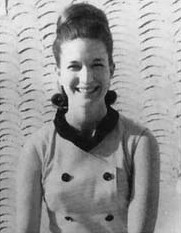
Silvia Odio
Silvia Odio (26) was living with her sister Annie (17) in Dallas, and they were the daughters of Amador Odio, who was jailed in Cuba as the leader of Junta Revolucionaria Cubana (JURE) a left-wing anti-Castro group. The ‘first version’ of the Odio Incident is the one reported to the FBI by Silvia’s social worker, Lucille Connell, who said that Silvia ‘knew Lee Harvey Oswald, and that he had made some talks to small groups of Cuban refugees in Dallas in the past’ (Scott, Deep Politics and the Death of JFK, p.118). Certainly in the context of Oswald trying to inflitrate Bringuier’s DRE in New Orleans in August, and having being seen at a Dallas DRE meeting on 13 October (Summers, The Kennedy Conspiracy, p.292), infiltrating JURE in Dallas as well is not outside the bounds of possibility. But the ‘second version’ of the Odio connection does not match with Connell’s account, and this was Silvia’s own version, given to the FBI and the Warren Commission. She said she met Oswald only once, when he visited her apartment with two Latin men, claiming to be members of JURE and working for the CRC. The first of these seemed to be the leader of the trio. He was tall, about 40, and gave his ‘war name’ as ‘Leopoldo’; the second ‘was shorter and wore glasses’ and had the name ‘Angelo’ or ‘Angel’ (Summers p.296). The American man with them was introduced as ‘Leon Oswald’ and he ‘stood quietly by, saying almost nothing at all. Like the others, he looked weary, rather unkempt, and had not shaved’ (Summers pp.296-7). Leopoldo was looking for her help to raise funds for violent anti-Castro operations. Suspicious and unnerved, Silvia declined, and the men left.
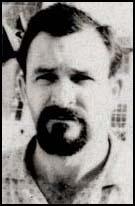
Loran Eugene Hall: was he Leopoldo?
Two days later Leopoldo phoned her up and told her Oswald was ‘an ex-Marine, and an expert marksman… He’s kind of loco, kind of nuts. He could go either way. He could do anything – like getting underground in Cuba, like killing Castro. [He] says we Cubans don’t have any guts. He says we should have shot President Kennedy after the Bay of Pigs. He says we should do something like that’ (Summers p.297). Amador Odio corresponded with his daughters, and was very suspicious when he received a letter from Silvia about these men, whom he suspected were not JURE members. Then, Silvia was hospitalized with shock after the JFK assassination, when she saw who was arrested for it (she would blackout under stress – perhaps she had epilepsy?). Both Silvia and Annie recognized ‘our’ Lee Harvey Oswald as their ‘Leon Oswald’.
Oswald having two associates is a bit inconvenient, and when the Warren Commission wrote to J. Edgar Hoover stating that ‘It is a matter of some importance to the Commission that Mrs. Odio’s allegations either be proved or disproved’, the FBI managed to produce one Loran Eugene Hall. The version of the incident that the Warren Commission accepted was that 3 ‘soldiers of fortune involved with the Cuban exiles’ were the ones who visited Silvia Odio: Hall (a gun runner), Larry Howard, and William Seymour (who according to Hall looked like Oswald).
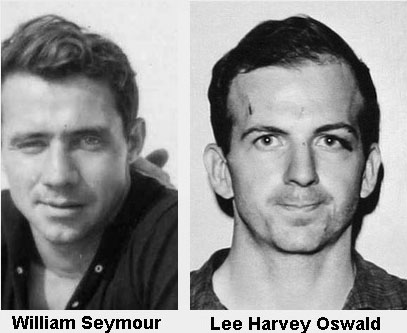
Photo: larry-hancock.com
Howard and Seymour, however, denied they ever met Odio, and then Hall recanted his story, but the FBI and the Warren Commission kept this information from the public and ran with the convenient Hall version.
(Other theories that involve an Oswald impostor who is Seymour, or anyone else, would of course have to discredit both Silvia and Annie Odio.)
Oswald in Mexico, September-October ’63
This blog has covered the issue of Oswald in Mexico as one big, confusing mystery, and Oswald and the CIA, more than any other book, has attempted to make sense of it all. In the process it becomes Newman’s key to understanding the JFK assassination itself.
The first thing he wants you to know is that on 16 September the CIA sent an ‘information report’ to the FBI, saying that they were ‘giving some consideration to countering the activities’ of the FPCC ‘in foreign countries’ (p.351). Funny that a week later Oswald would show his FPCC card as part of his bona fides to the Cuban Consulate in Mexico!

CIA reports on Oswald’s FPCC activities were not stored in the CIA’s intelligence file on Oswald, a file which was kept by the Special Investigations Group (SIG), the mole-hunters within CIA Counterintelligence (the possibility of a mole in the CIA having been raised in April ’58 by Popov, prior to Oswald’s defection; the SIG kept tabs on defectors thereafter). Rather, those Oswald-FPCC reports were going into a separate Counterintelligence operations file on the FPCC, where the abovementioned ‘information report’ could also be found. Furthermore, someone removed from the Oswald file the August ’62 FBI report about interviewing Oswald following his return to the US, so the Mexico desk at CIA headquarters, who would not have an overview of different sections of Counterintelligence, would read cables coming from the Mexico CIA station about Oswald, and when given the Oswald file, would think that it had not been updated since May ’62 and would not know anything about his activities since then (pp.619-621).
But that’s back at HQ. Let’s see how Newman makes sense of Oswald in Mexico City itself. Newman decides that the best guide to real events is to combine the transcripts of CIA surveillance at the Soviet Consulate (Embassy) in Mexico City (Lopez Report p.117); the statements about the sequence of events from Silvia Durán, secretary at the Cuban Consulate; and the written account of Oleg Nechiporenko, vice consul at the Soviet Embassy, whose book includes the accounts of vice consul Valery Kostikov and consul Pavel Yatskov.
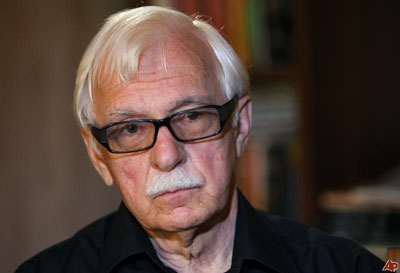
Oleg Nechiporenko, years later.
The sequence of real events:
1. On the morning of Friday, 27 September, Lee Harvey Oswald visited the Cuban Consulate to request ‘an in-transit visa for travel through Cuba to the Soviet Union’, but he had no ‘passport-style pictures of himself necessary for the visa’ (p.356).
2. Oswald left and returned to the Consulate with photos. Silvia Durán ‘filled out duplicate visa application forms for him and then explained he would have to get his Soviet visa before she could issues his Cuban visa’ (p.357).
3. Oswald went to the Soviet Embassy and met Kostikov, then Nechiporenko, whom he told that the Soviet Embassy in Washington had turned him down for a visa. According to the rules, a visa application should be handled in the US but Nechiporenko said he’d make an exception. However, the papers would still have to be sent to Moscow and the reply from there would have to be sent to Oswald’s permanent US address, and this process would take at least 4 months. Oswald got upset at this news, shouted ‘This won’t do for me!’ and was escorted from the premises (p.358).
4. Oswald returned to the Cuban Consulate in the late afternoon. He claimed to Durán that the Soviets had said there’d be no problem with a visa. Durán decided to check, and phoned up the Soviets. Kostikov told her that they had not approved a visa for Oswald. The Cubans therefore could not help him, and he argued with the consul, Eusebio Azcue.
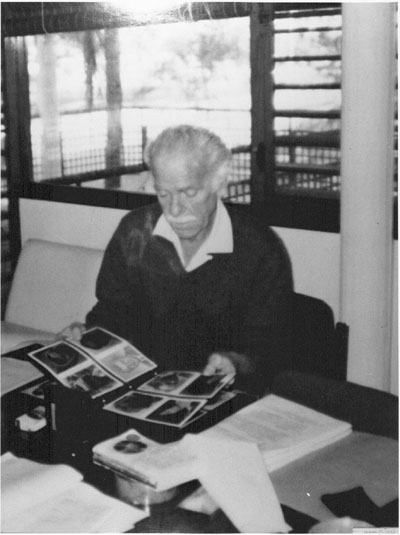
Eusebio Azcue.
5. On Saturday morning at the Soviet Embassy, Oswald tried to convince Yatskov to give him a visa, saying ‘I am afraid… they’ll kill me. Let me in’ (p.361). He showed his revolver. Nechiporenko, Kostikov and Yatskov managed to calm him down, but he would not take the visa application forms they offered him, as if 4 months would be too late. Then he left.
Newman’s account works as long as we set aside the issue of Azcue not identifying Oswald, and Durán saying he was short and blonde. But that’s Newman’s account of real events, and it goes up to 10.30am Saturday, 28 September. After that, ‘Something amazing was about to happen to “reality” in Mexico City’ (p.362).
The CIA telephone surveillance transcript of a call to the Soviet Embassy at 11.51am has ‘Durán’ putting an American on the line to them. He speaks in bad Russian and says he had visited the Soviet Embassy, now has ‘his address’ from the Cuban Consulate, and agrees to come to the Soviet Embassy now to ‘leave’ his ‘address’ with them. The transcriber of the tapped phone would go on to claim that the American speaker ‘is identical with the man who would, in a telephone call three days later, state “My name is Oswald”‘ (p.364). Newman reasons that this is a Durán impostor, and an Oswald impostor who does not know what transpired between Yatskov and Oswald, and is ‘trying to keep the conversation going’ by talking about addresses, but does not realize that the real Oswald was not interested in visa application forms (which would involve address information), but immediate help from the Soviets. The mysterious circumstances under which this recording and the later 1 October recording went missing after the JFK assassination indicates a possible CIA or DFS operation to impersonate people in Mexico and phone up the Soviet Embassy.
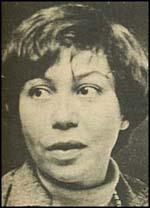
Silvia Durán
Reports of Oswald in Mexico went into the Oswald file in the CIA, which at that point had in it no documents dated later than May ’62. The only people in the CIA who had access to both that file and the file containing information on Oswald’s FPCC activities, i.e. ‘all the pieces of the Oswald puzzle’ (p.396), were the Counterintelligence SIG under Birch D. O’Neal and the Security Office under James McCord (later a Watergate burglar), and naturally the head of Counterintelligence, James Jesus Angleton.
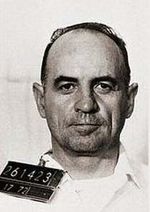
James McCord
The 8 October cable about Oswald from the Mexican CIA station to headquarters ’caused a lot of excitement’ (p.400) according to Ann Egerter, who was in charge of Oswald’s file at the SIG, because this ex-defector had met Kostikov, who was KGB. However, according to the CIA’s story, prior to the JFK assassination no-one connected these events to the ‘project TUMBLEWEED’ file, which contained the information that Kostikov was an assassination expert (p.620). Strangely, on 10 October the CIA were happy to connect Oswald to the ‘Mystery Man’ in their cable (Lopez Report p.146) to the FBI, State Department and Navy about the 1 October surveillance transcript (‘an American male, who identified himself as Lee Oswald, contacted the Soviet embassy in Mexico City inquiring whether the embassy had received any news concerning a telegram which had been sent to Washington’). The cable linked this ‘Oswald’ to the redefector Oswald, but at the same time endorsed the wrong description (the 35-year-old athletic) (pp.398-9). Meanwhile the CIA sent a cable to their own Mexico City station with an accurate description of the true Oswald. Ann Egerter signed off on both cables and told the HSCA ‘she could not say why the description discrepancies occurred’ (pp.400-401). The Counterintelligence ‘releasing officer’ for the cable to the FBI, State Department and Navy was Jane Roman (p.401) and on 4 October she had read, and signed that she had read, ‘the latest FBI report on Oswald’s FPCC activities in New Orleans’. With the knowledge from that report, she would have known the information in the cable about Oswald was false, and when interviewed by Newman for his book, she looked at both documents and said, ‘I’m signing off on something that I know isn’t true’. She states she wasn’t ‘in on’ this ‘tight control’ of information, and that it was ‘indicative of a keen interest in Oswald, held very closely on a need-to-know basis’ (p.405).
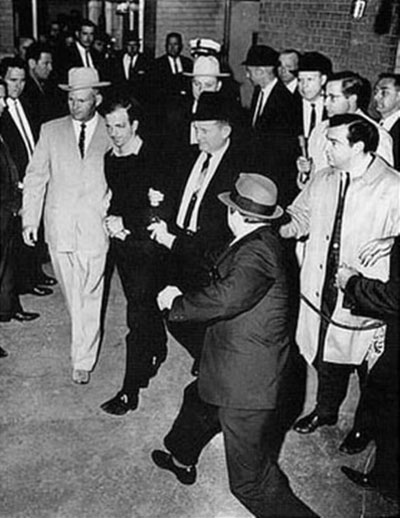
Newman points out that while Oswald was murdered, the other person who had been impersonated, Durán, was still alive. The day after the JFK assassination, the CIA station in Mexico City informed the Mexican authorities that she should be arrested, and as she was a Mexican citizen not a Cuban diplomat, they did just that. She told her interrogators Oswald never returned to the Consulate after 27 September, but the Warren Commission, influenced by the CIA and the Mexican government, reported that ‘confidential information’ told them that he did, and Durán’s 23 November statement was not accurately reported by the Warren Commission. Newman reasons that the CIA’s fake Oswald ‘transcripts were threatened by what she was saying’ (p.409) and that was the motive behind CIA-Mexican pressure on the Warren Commission.
Incidentally, in her HSCA evidence, Durán explained why Oswald had her phone number in his address book: ‘I used to do that to all the people, so they don’t have to come and to bother me. So I used to give the telephone number and my name and say “give me a call next week to see if your visa arrived”‘ (p.411).
The main text of Newman’s book finishes by noting how scandalous it is that the CIA had known in October that Oswald met with a KGB assassination expert and they didn’t tip off other agencies (p.429). The FBI that same month took Oswald off their espionage watch list (p.630). Oswald may even have threatened to kill JFK if the ‘Solo’ story is to be believed. The CIA could protect operations and sources, etc., but it led to the death of a President.
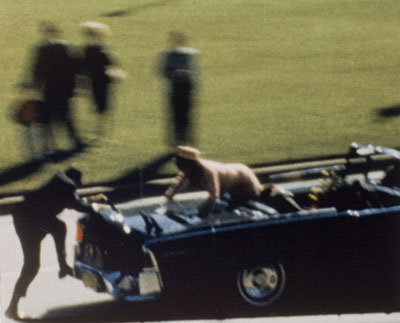
That’s if Oswald was the assassin. Thirteen years later, in 2008, a new edition of Oswald and the CIA came out with an ‘Epilogue’, which casts a different light on the CIA’s behaviour: what if Oswald was being manipulated by ‘handlers’? After all, his tourist visa to Mexico was issued next in sequence to the visa of William Gaudet, who worked for the CIA.
‘On the surface, Oswald’s trip to Mexico City made no sense at all,’ Newman writes. Oswald was doing and saying things ‘that were not in his interest’ (p.615). He could have been prosecuted for going to Cuba, while the State Department in the summer of ’63 had already given him permission to travel to the USSR, which he could easily have done via Europe not Cuba.
Manipulators, in Newman’s view, may have been trying to link Oswald to both Cuba and KGB assassination expert Kostikov. Oswald could not get a Cuban visa without getting a Soviet visa first, so it brought him into almost inevitable contact with Kostikov. This provides the motivation for the two fake phone calls: they were designed to be picked up by CIA surveillance, so that there would be a record that Oswald met Kostikov. In the second transcript, the 1 October one, both men were specifically named. Newman thinks the 1 October transcript (Lopez Report p. 78 and p.79 ), with its ‘Lee Oswald’ waiting for an ‘answer from Washington’ implies that the impostor knew the contents of the genuine Durán-Kostikov phone call of the afternoon of Friday 27 September (Kostikov to Durán: ‘According to the letter that he showed from the Consulate in Washington, he wants to go to Russia to stay for a long time with his wife who is Russian. But we have received no answer from Washington’), which means the impostor was being informed by ‘either a member of the CIA station or… someone… at the telephone tap center’ (p.618).
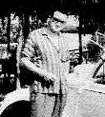
Valery Kostikov
The Oswald impostor made the Warren Commission possible. Evidence was placed ‘into the CIA’s records that, on 22 November, would link KGB assassinations to the murder of President Kennedy’ and President Johnson, in a taped phone conversation with Senator Russell on 29 November, says he had to stop this ‘from kicking us into a war that could kill forty million Americans in an hour’ (p.618). That was Johnson’s main task; he already knew the Oswald case was fishy. On 23 November, in another taped phone conversation, this time between Johnson and Hoover when the FBI heard the tapes recorded in Mexico, Hoover reported to Johnson that the recordings revealed, ‘A second person was using Oswald’s name’ (p.632). Although we don’t have the Mexico recordings today, the existence of the Oswald impostor is thus confirmed, and Hoover is on record internally in the FBI about being angry with the CIA over the fake Mexico City Oswald (p.635).
Apparently a tape containing the recordings, and surveillance photos of Oswald, were kept by CIA Mexico City station chief Win Scott: ‘Angered by the cover story that the station had missed Oswald’s visits to the Cuban Consulate, Scott kept the tape and the photos in his safe as insurance to prove they had known about it’ (p.635). Scott, probably out of the loop on the imposture, did a voice comparison himself, by buying a copy of the WDSU radio debate with Oswald in New Orleans in August.
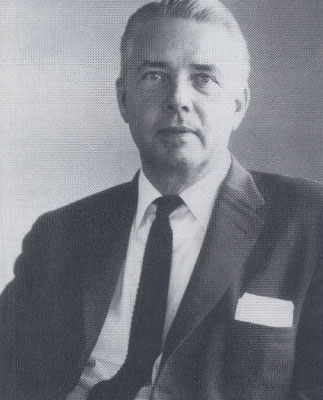
Win Scott
Newman takes the view that any plot to kill Kennedy had this very handy ‘WWIII pretext for a national security cover-up’ (p.636), because Johnson couldn’t risk an investigation into the JFK assassination that could start a nuclear war. The significance of Oswald in Mexico could not be understood by most people in CIA headquarters in October, because information about Oswald was stashed in different files, but after 22 November it all came together, including Kostikov’s role as an assassination expert. A very small group of people had control of Oswald’s file(s) from the time of his defection in ’59. Newman sees only one person in particular who knew ‘both the Cuban and Soviet parts of Oswald’s story’ and also had access to ‘project TUMBLEWEED’, the operation against Kostikov; the only man with power who could conceivably have done it all, planned the assassination, bifurcated Oswald’s CIA file, stage-managed Mexican unreality under Win Scott’s nose (using perhaps only one or two trusted agents), and then after the assassination pushed the ‘international communist conspiracy theory’ to scare Johnson into covering up any plot; the only man with the kind of manipulative ingenuity to conceive of such a dialectical cover-up; a paranoiac, yet one who could construct reality so that all his opponents are kept in a state of paranoia of their own; the man who emptied Win Scott’s safe when he died: the head of CIA Counterintelligence, James Jesus Angleton, about whom there shall be more, in the next entry of this blog.
- Who Shot JFK?
- The Kennedy Conspiracy
- Reasonable Doubt (part one)
- Reasonable Doubt (part two)
- Who’s Who in the JFK Assassination
- Deep Politics and the Death of JFK
- Deep Politics II: Oswald, Mexico, and Cuba (part one)
- Deep Politics II: Oswald, Mexico, and Cuba (part two)
- Oswald and the CIA (part one)
- Oswald and the CIA (part two)
- Marina and Ruth
- Oswald and the CIA (part three)
- Wilderness of Mirrors
- Perils of Dominance
- JFK and the Unspeakable
- Z-∞
